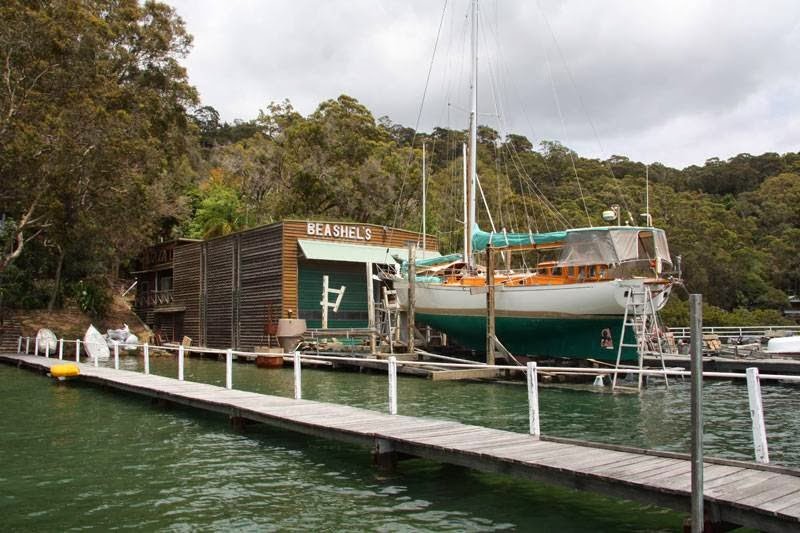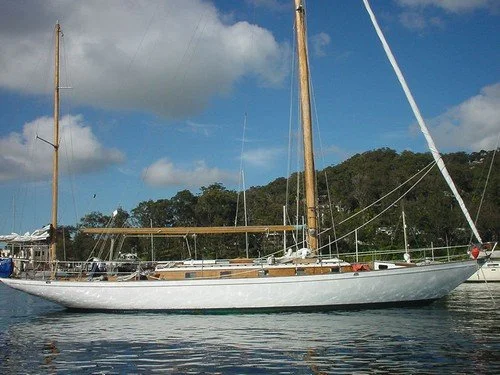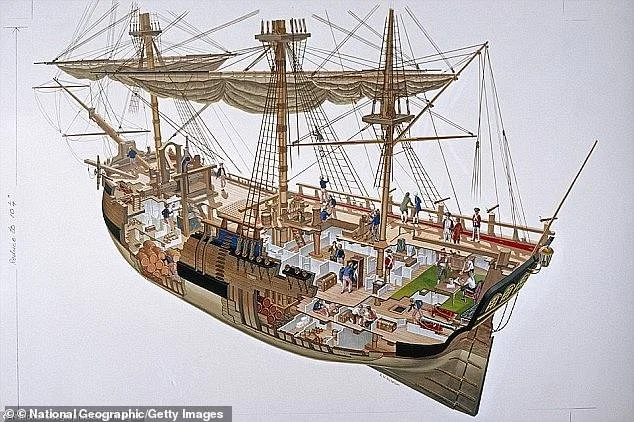For my Love Of EGRET Part One
By Sal Balharrie
Sometimes, writing and researching articles for SWS is to jump whole heartedly into the rabbit hole that is the internet.
One has no idea where one might end up.
Take this week as case in point – if you will – come with me.
In the next five minutes we’re about to travel across the oceans from Middle Harbour to the Americas; England to Australia with the likes of Sparkman and Stephens, Cook, Columbus, modern days Volvo racers and land back with a salad roll on Port Philip.
December 31, 1999, we were moored in Middle Harbour Yacht Club, waiting for guests to arrive before heading round the corner for an evening of fireworks. Beside us was a young guy, on a very beautiful boat. I remember we both had small children roughly the same age. I remember a glass of wine and a book. The kids played like puppies, swinging on ropes from one boat across to the other, making instant best friends. I recall his boat was named EGRET – the 48ft Sparkman and Stephens yawl - and though the vessel was in need of obvious repair, I imagined myself on her decks - I wished she was mine. And that was pretty much it – that was the encounter and yet 22 years later, the desire to be her custodian remains – very much.
Recently I heard, via the SWS grapevine, EGRET is alive - she’s in Beashel’s shed in Elvina Bay. So, this week, for SWS, I’ll rekindle old love and write an article about EGRET. I’ll call Colin and find out what’s going on with the vessel, I believe to be one of the most beautiful in Australia.
I called Colin.
Colin Beashel picked up.
It was a short call.
Not much to report.
Please stand by.
I put the phone down and as I did, I had a thought – I wondered, who was EGRET’s original custodian?
OK Google. What have you got for me?
And there you have it – EGRET was built for one Mr C Porter Schutt and together they did well.
ANNAPOLIS, Md., June 22-- C. Porter Schutt's yawl Egret, one of the Chesapeake Bay entries, was the winner in Class B and the Naval Academy yawl Swift, sailed by Lieut. Comdr. Bob Hinckley and a midshipman crew, was the apparent winner in Class C as the long drawnout Newport-to-Annapolis race drew to a close late this afternoon.
And then another curious link - thanks Google - EGRET and Schutt featured in Sports Illustrated, June 22, 1959. A portal to another time and an article:
How to feed a Sailor
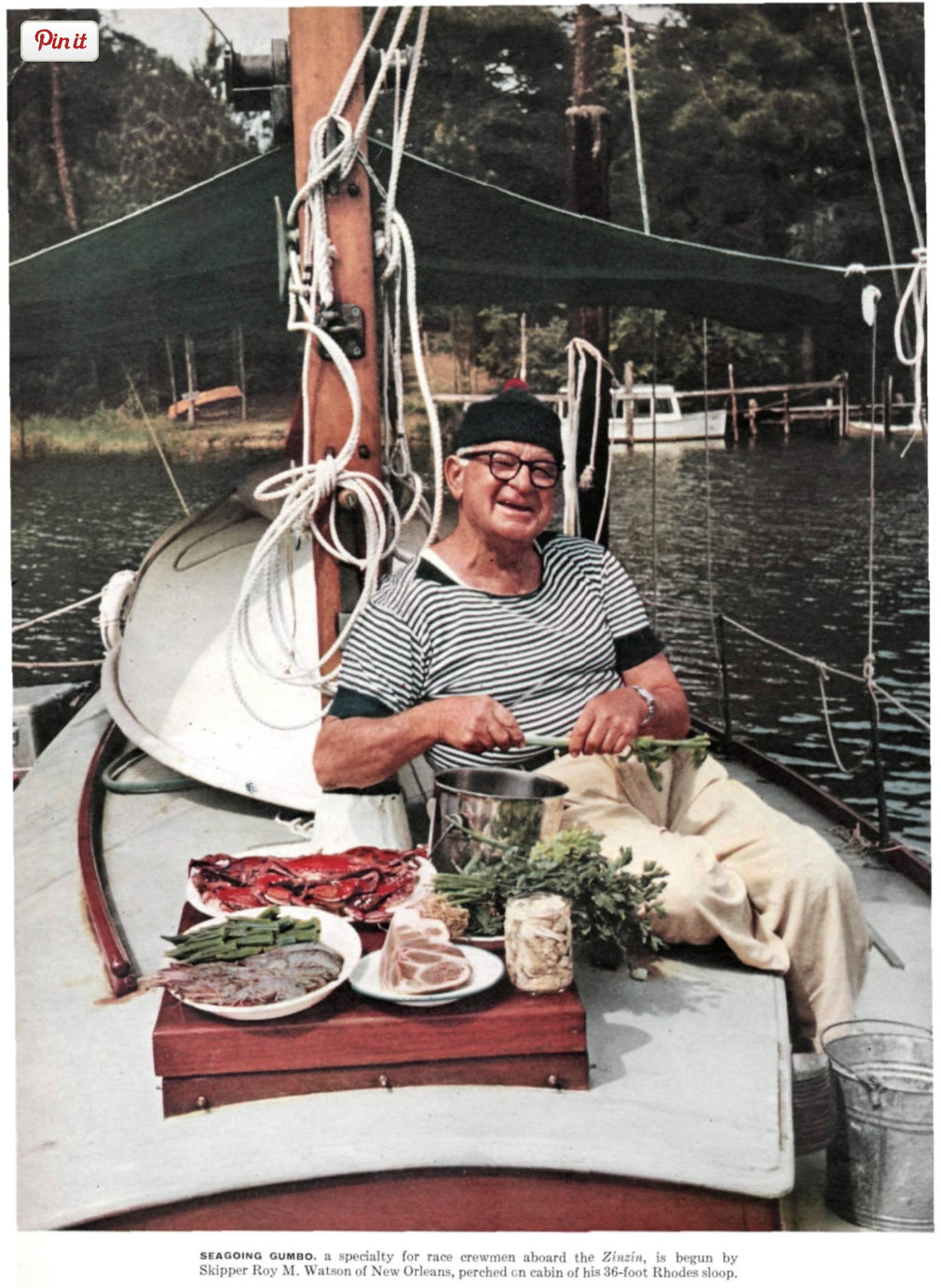


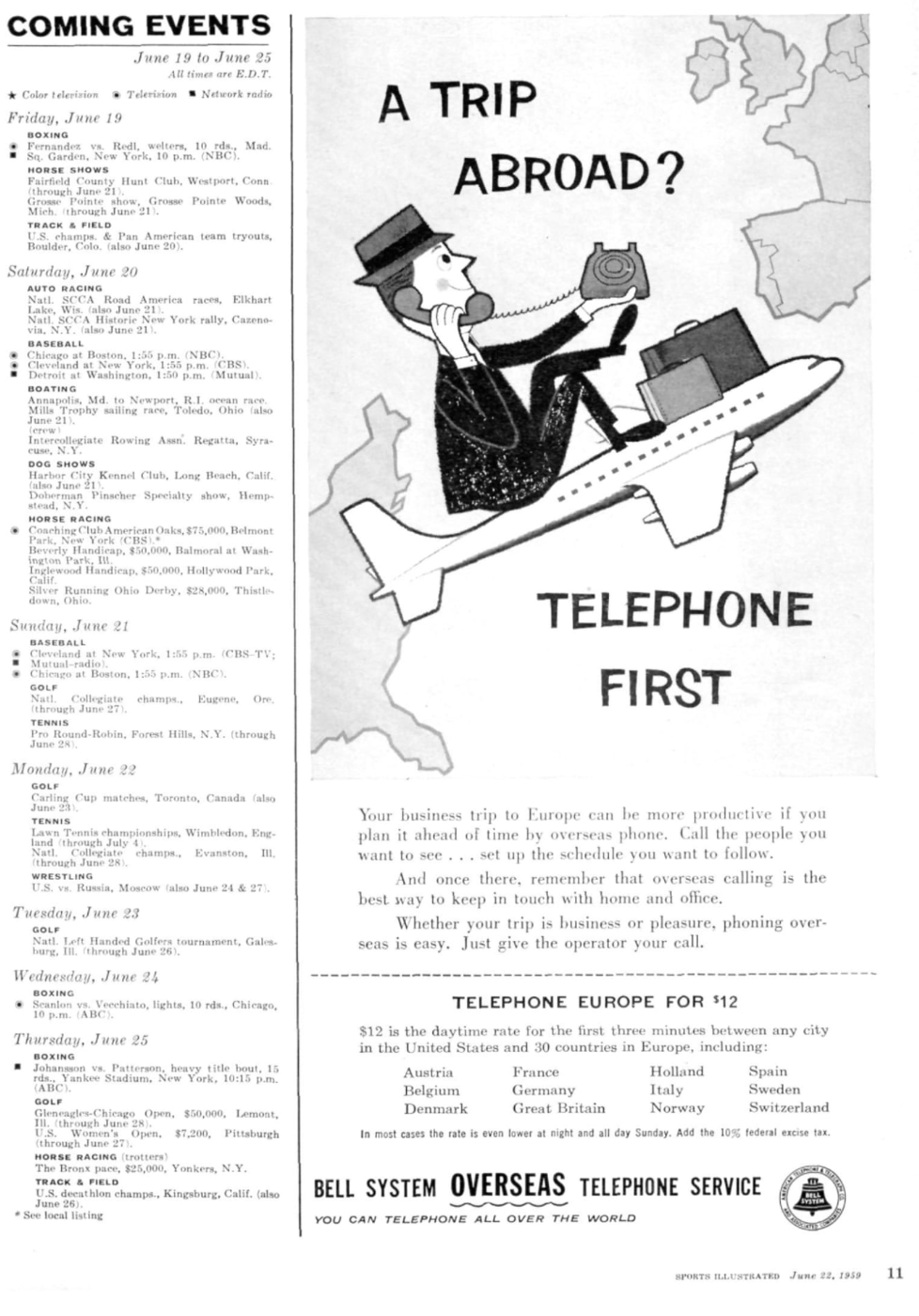

EGRET, Wilmington, Del.
C. Porter Schutt recommends bland food on the first day at sea. After the typical late-noon racing start, his crew lunches on unspiced ham or beef sandwiches. Along with these goes a "Schutt special cocktail" of half milk and half vichyssoise, served cold but not ice-cold. If the "cocktail" doesn't find favor with jittery stomachs, cold bouillon is available.
Bland food? We may have to excuse Mr Schutt’s lack of culinary skill on the time – it was the 1950s after all. Is the term ‘jittery stomach’ used here in place of ‘Oh my god Porter, if you make me drink that stuff I’ll throw up all over your varnish!’.
But now I was on a roll.
Further still I went, down the rabbit hole.
If we’re talking food, how about the ENDEAVOUR?
What was the cook up to on Cook’s ship?
Here’s the menu.
MONDAY Half a pound of Butter, about ten ounces of Cheshire Cheese
and as much boiled Oatmeal or Wheat as the can eat.
TUESDAY Two 4 pound pieces of Beef, or one four pound piece of Beef
three pounds of Flour and one pound Raisins or half a pound of suet.
WEDNESDAY Butter and cheese as on Monday and as much boiled
Pease as they can eat.
THURSDAY Two 2 pound pieces of Pork with Pease.
FRIDAY The same as Wednesday.
SATURDAY The same as Tuesday.
SUNDAY The same as Thursday.
Turns out, there were benefits to being Spanish.
While, Christopher Columbus had no idea how long he would be at sea for. His calculation of time was based on his "best guess" view of the diameter of the earth. Therefore getting sufficient food and water for the expected time away from land was one of the key elements to his first expedition.
Columbus sailed with 3 ships from Palos de la Frontera in Spain on 3 August, 1492. His flagship, the Santa Maria had 52 men aboard while his other two ships, the Nina and Pinta were crewed by 18 men each. The ships made a stop at the Canary Islands to top up provisions and on 6 September 1492 sailed westward.
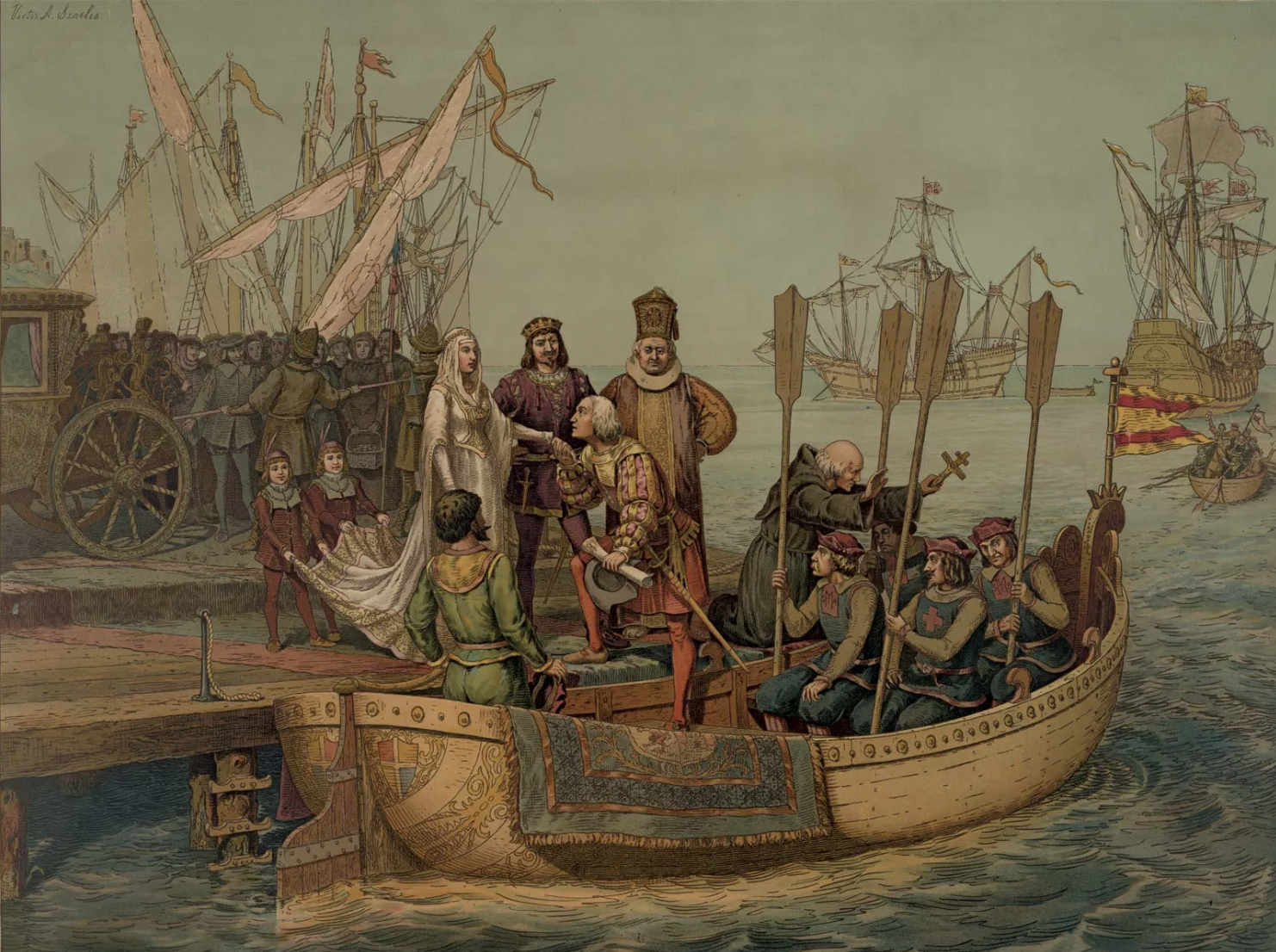

The menu for Spanish seamen consisted of water, vinegar, wine, olive oil, molasses, cheese, honey, raisins, rice, garlic, almonds, sea biscuits (hardtack), dry legumes such as chickpeas, lentils, beans, salted and barreled sardines, anchovies, dry salt cod and pickled or salted meats (beef and pork), salted flour.
The olive oil and olives were stored in earthenware jugs. The rest of the food was stored in wooden casks which could hold produce like meat preserved in brine, or dry goods. All were stored in the hold, the driest section of which was reserved for casks carrying dry provisions. A cooper (barrel maker) was responsible for keeping the casks tight. Problem was the casks with brine would leak, the casks with dry goods would let water in. It was easy to loose much of your food and water.
The food was mainly boiled and served in a large communal wooden bowl. The sailors had no forks or spoons, but each sailor carried an all purpose knife, that he could use to cut large chunks. The only means of cooking was an open firebox called "Fogon." It had a back to screen it from the wind. Sand was spread on the floor of the box and a wood fire built on it.
Fish was served more often than meat. Meats were usually prepared in a stew with peas other legumes or rice and served with sea biscuits which were soaked in the soup or in water to make them edible. Sea biscuits would last at least a year if they were kept dry.
Both wine and water for drinking were stored in wooden barrels.
And while we’re crossing oceans why not food and the Volvo Ocean Race.
When the Volvo Ocean Race started out in 1973 as the Whitbread Round The World Race, crews brought huge quantities of food and drinks on board. They dined well, and some crews even dressed for dinner every evening. Today, it's a totally different story.
As the boats became faster and more high tech over the years, weight was reduced for speed reasons, and fresh food was replaced with freeze-dried, which is rehydrated before being eaten. Now, the crews go an entire leg – up to 20 more days – without eating any fresh food. Even with this weight reduction, it takes 12.5kg of freeze-dried food to feed 10 people for one day.




Here crews are burning 6000 calories, each per day – that’s roughly 3 x more than your average landlubber. Nothing fresh, nothing crunchy, just calorie laden, energy efficient stodge.
DONGFENG’S FREEZE-DRIED COTTAGE PIE RECIPE
Ingredients: Freeze-dried cottage pie, barbecue sauce, grated cheese (optional)
Method: Rather than just adding the mince and the mashed potato all together and ending up with a brown mess, you put the mince in first, and you mix it up.
Then get another pot and mix the potato up. Put a layer of barbecue sauce on the meat and put the mashed potato on top. If you've got some grated cheese, you can also put that on top.
And now full circle, while writing this article, my phone went ping – it’s a conversation from the girls on my boat. They’re discussing this weekend’s regatta where my trimmer Tao has offered to make lunches for everyone. ‘Café Tao is closing for orders tonight so that I can run to the market tomorrow to buy ingredients. If you want a sandwich pls add your name to the spreadsheet.’
Here’s her menu:
AWKR LUNCHES BY CAFE TAO aboard NO MAN’S LAND
SATURDAY - Crispy crusted chicken, baby spinach, mayonaise, roasted tomatoes on Turkish bread.
SUNDAY - Smoked ham, avocado, sliced cucumber, Dijon mustard, baby cucumber pickles, salad leaves on baguette.
MONDAY - Falafel, red onion, tahini lemon sauce, diced tomato in pita
If you happen to be on taking part in the Australian Women’s Keelboat Regatta, get your order in.
More on EGRET soon.

